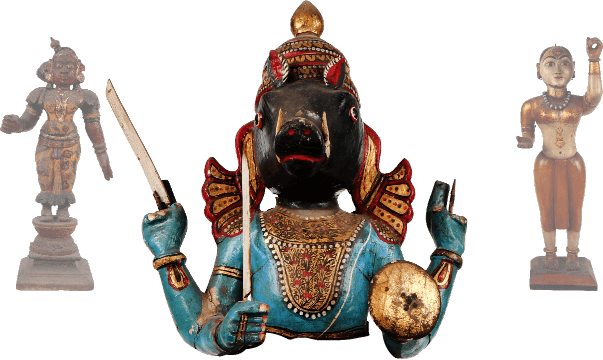Title : Textiles: Chikankari sample Pieces.
Accession No : 95/7915 (109)
Specimen of a sample design of chikankari showing narrow border of leaf motif.
Provenance
- CountryIndia
Condition
- ConditionGood
- Action NoteCNR
Dimensions
- Measurement (CMS)8.5 x 5
Significance
- ReligiousChikankari’s origin has multiple versions, and gender differences in perception to quality of work have also played an important part. One speaks about a traveler who taught Chikankari to a peasant in return for water to drink. The feminine version talks about empress Nur Jahan’s contribution for commissioning delicate motifs and elements found on the Isfahan Mosque to be translated onto stitchery. Another story credits an anonymous princess from Murshidabad for embroidering delicate muslin to attract the attention of the Nawab and other ladies followed the same path to master the art of embroidery to get the attention of Nawab.
- Socio economicChikan work or ChikanKari (kari meaning work in Hindi) is thought to have originated in Bengal and to have been practiced in Dacca and Kolkata. Jamdani was previously confined to Dacca, but from 1850 onwards, fine white-on-white Jamdani was produced near Tanda, Faizabad which is said to have resulted in the beginning of Lucknow chikan-kari industry. Once a symbol of sophistication, mill-made fabrics, cotton polyester mixtures and thin silk have resulted in quality of chikan work to suffer a catastrophic decline. Loss of patronage resulted in the industry becoming oriented towards mass market and loss of skilled embroiders due to cheap imitation of this rich textile exported abroad and distributed domestically. In December 2008, the Geographical Indication Registry (GIR) granted chikankari Geographical Indication (GI) designation, recognizing Lucknow as an exclusive centre for the textile.
- ArtisticChikankari, or chikan work, is a distinctive form of hand embroidery. It entails intricate needlework employing a range of stitches, traditionally executed with white thread on white fabric. The chikankari patch features tepchi and hathkati embroidery, used for creating a beautiful running border. Tepchi is a stitching technique that manifests as a slender line with stitches of uniform length, approximately four threads, traversing beneath one or two threads of the cloth. This method is typically employed on lightweight mulmuls, serving the purpose of outlining and filling ornamental motifs.
Description
- DescriptionSpecimen of a sample design of chikankari showing narrow border of leaf motif.
- Inscription/Markings No
- Reference"Chikankari; A lucknawi Tradition , Paola Manfredi pg. 26 27,119,125,207 Indian textiles; John Gillow , pg 160,161 "
- KeywordChikankari, embroidery, stitches

